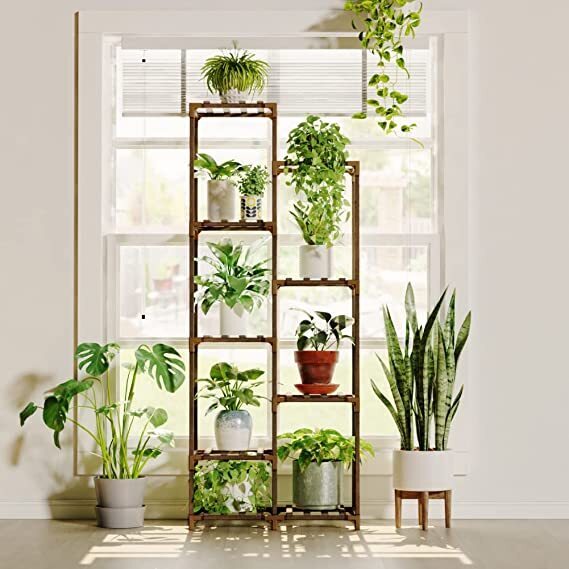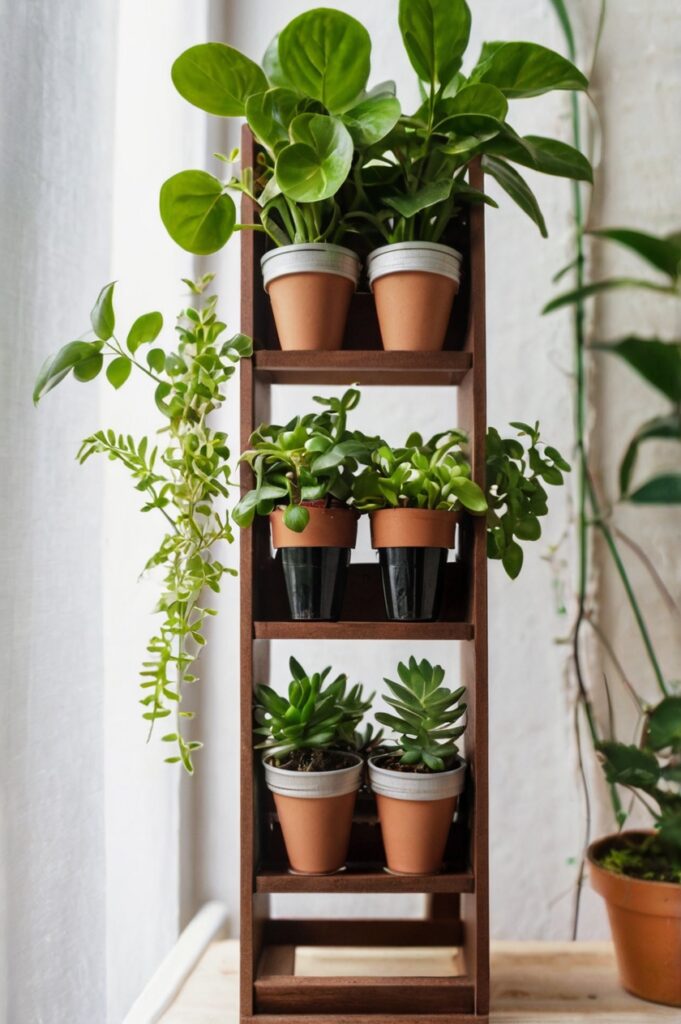Alright, so I’ve been meaning to share this little project I tackled a while back. My living room corner was looking a bit bare, and I had this one plant, a lovely fern, that was just sitting on the floor. It deserved better, you know? I’d seen some of those cool plant stands that sort of cradle the pot, almost like a nest, and thought, “I could probably make something like that.” Famous last words, sometimes, but this time it worked out okay.
Getting Started – The Idea and Materials
So, the plan was a “nest” plant stand. Not a literal bird’s nest, mind you, but something that felt a bit organic and supportive. I didn’t want anything too complicated. I had a look around the shed – it’s amazing what you accumulate over the years. Found some leftover bits of pine from an old shelving project. Not the fanciest wood, but sturdy enough for a plant.

Here’s what I basically rounded up:
- Some pieces of 1×2 pine.
- A slightly wider piece of pine for the base of the “nest” part.
- Wood screws.
- Wood glue – always good to have.
- My trusty old saw, drill, and a screwdriver.
- Sandpaper, of course.
Nothing high-tech, just the basics. I figured if it didn’t work out, I wouldn’t be out much, just a bit of time and some scrap wood.
The Build – Putting it all Together
First thing, I decided on the height. Didn’t want it too tall, just enough to lift the fern off the ground a bit. So, I cut three pieces of the 1×2 pine to the same length for the legs. I angled the tops and bottoms a little bit, thinking it would make it look a bit more stable and, well, intentional.
Then came the “nest” part. This was a bit more thought. I took that wider piece of pine and cut a circle out of it. This was going to be the base where the pot would sit. My circle-cutting skills with a jigsaw are… let’s say, they produce “organic shapes.” But it was good enough.
Next, I cut a bunch of shorter 1×2 pieces. The idea was to attach these vertically around the edge of the circular base, kind of like a little fence, to create that “nest” feel. I didn’t want them super tight together, a bit of space between them would look better, I thought. I played around with the spacing, then started gluing and screwing them from the underside of the circular base, going all the way around. This was probably the most fiddly bit, holding those small pieces straight while drilling.
Attaching the legs was next. This is where you hope your angles were right. I decided to attach the legs to the outside of the “nest” structure I’d just built. I positioned them equally around the circle, drilled pilot holes, and then used longer screws to secure them through the vertical “nest” pieces and into the legs. Gave it a good wiggle. Seemed solid enough.
Once it was all assembled, it looked a bit rough, as expected. So, out came the sandpaper. I spent a fair bit of time smoothing all the edges, especially the top of the “nest” bits and the legs. Didn’t want any splinters when moving it around, or for the plant pot to get scratched.

The Finishing Touches and Result
I thought about painting it, or maybe staining it dark. But then, I kind of liked the raw pine look. It felt simple and honest. So, I just decided to leave it natural for now. Maybe I’ll add a coat of clear varnish later if it starts looking a bit grimy, but for now, au naturel it is.
And that was pretty much it! I stood back and had a look. It wasn’t perfect, not by a long shot. If you look closely, you’ll see the circle isn’t a perfect circle, and the legs might be a fraction of a degree off here or there. But you know what? It stands firm, it holds the plant, and it has that “nest” vibe I was going for. The fern looks quite happy in its new, slightly elevated home.
It’s a simple thing, really. But there’s a good feeling you get from making something with your own hands, even if it’s just a basic plant stand from scrap wood. It filled an afternoon, cleared out some wood from the shed, and now my fern isn’t on the floor anymore. A win-win, I’d say.





















